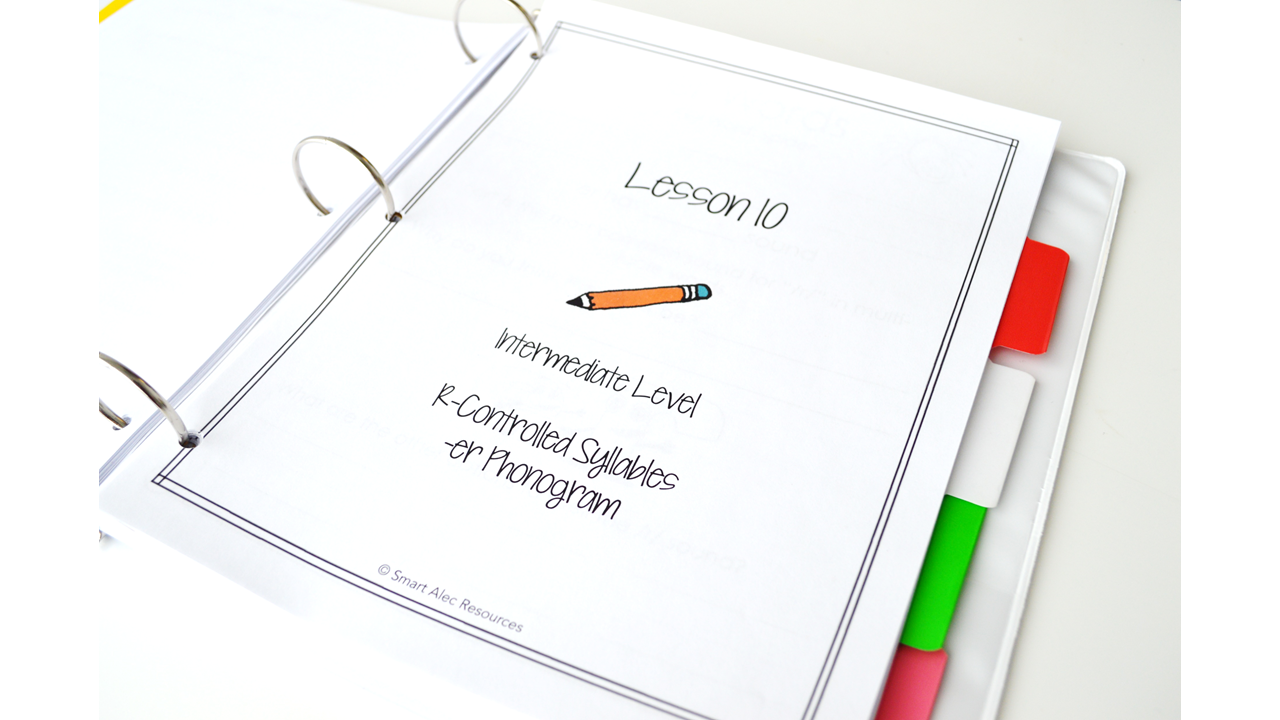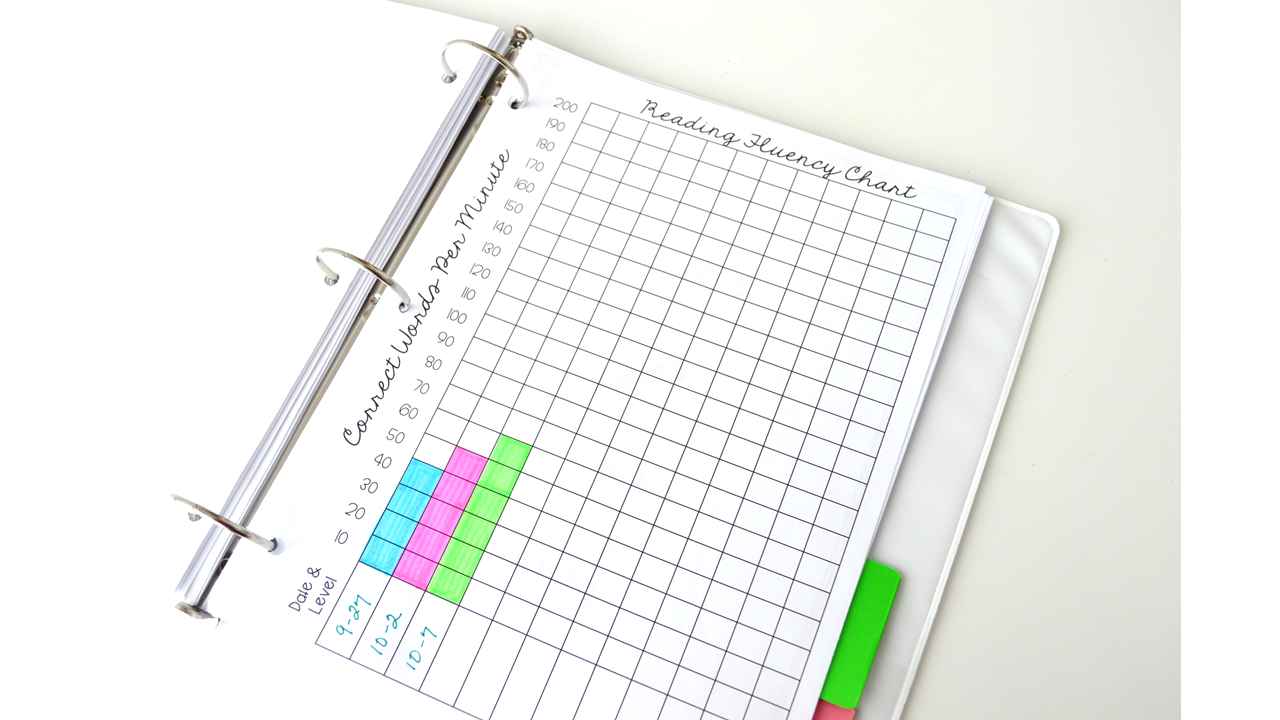How We Organize Our Intervention Binder for 1:1 or Small Groups
Evidence-Based Reading Intervention Binders
In our intervention setting, we create binders for all of our students, they look different depending on the level but generally, they follow the same format. The reason here is that when we think about evidence-based reading intervention we must be hitting all of the necessary components of reading and writing.
The way we organize our materials and our binder set-up is based on making sure we have activities to align with each of the core components of effect literacy instruction including phonological awareness, sound-symbol knowledge, morphology, syllable type and syllabication instruction, syntax, and semantics that align specifically with the National Reading Panel's analysis of the 5 core components of literacy which include Phonological Awareness, Phonics, Reading Fluency, Vocabulary, and Comprehension.
We have our binder set up in five sections or eight sections depending on what binder tabs we have available ;)
We have tabs broken into:
Decoding
Morphology
Red Words/Phonological Awareness/Spelling
Reading Fluency/Comprehension
Written Composition
Sometimes we break out the sections in tabs 3 and 4 when we have 8 tabs available. Ultimately this comes down to whatever was on sale or available in the supply closet!
Often in our front section before jumping into the decoding tab we put a sound drill deck or the phonogram race to have it consistently available for our students.
Then we jump into the meat of our lesson with our decoding drills. Often we will fill the students' binder ahead of time with all of the lessons - this really depends on whether the student will be keeping his or her binder or if we will be keeping it with us. We have learned that it's often best to have a separate homework folder that we send back and forth and we hold onto the binder so we always know we will have it.
So let's dive into those sections a bit.
Section 1 - Decoding
Since this is the core aspect of our intervention we want to have this front and center in our notebook or binder. We use student workbook pages in this first section that correspond to the rule we are teaching for the week.
Section 2 - Morphology
This is the second big rock of effective reading intervention. If you are familiar with the three bases of reading you know that the goal is to create an extra speedy pathway in the brain from our semantics processor (processes the meaning) to phonology processor (processes the sounds of the word) to the orthography processor (processes the visual letter). When we think about this triangle of reading processes we may need to move from the semantic processor (meaning) to the orthographic processor (visual print). This is where morphology can come in really helpful! For students who are ready (often third grade and up) for this type of instruction it needs to be a core piece of the session.
Section 3 - Red Words, Phonological Awareness, Spelling
The next section of our binder is geared toward practicing red words (phonetically irregular words that don't follow our patterns). Whenever possible we use this opportunity to layer in some structured word study or word inquiry. For example, studying the base word “do” can give us the words does and done. English is a tricky language because we preserve morphology (meaning parts) over phonology (sound parts) so sounding out these red words can be difficult.
>>>You can check out how we teach red words and grab a sample of this resource by clicking here<<<
We also include our Elkonin boxes and our spelling and dictation sheets in this tab. Or if we are really lucky and have 8 tabs available we will give Phonological Awareness and Spelling their own tabs!
Section 4 - Reading Fluency & Comprehension
We work on reading fluency and comprehension together. When we work with our students we like to practice passages on a cold and hot read so they can begin to chart their growth. While you can absolutely practice reading fluency at the single-word level, what we have found is that students will take speed over accuracy every day of the week. We don't want this at all. So when we are looking at fluency we are aligning this task with comprehension because the end goal of strong reading fluency is better comprehension not faster reading.
We align our students' comprehension passages to meet specific needs. This really depends on what type of comprehension difficulties (if any) our students are displaying. We personally love to incorporate authentic text into our sessions wherever possible.
We like to use appropriately leveled text for this section but not controlled text. Reading controlled text passages does not generalize well to real reading. While we like using controlled text at the sentence level and in some instances to build confidence we don't like relying on this practice. What we want to see is students applying their knowledge and finding patterns they know. While there will likely be patterns they haven't yet been exposed to in non-controlled text reading, this is okay! Our goal is for students to be able to self-recognize patterns they know versus patterns they don't. When we come across a pattern we have not explicitly instructed, we will simply provide the word to the student.
Section 5 - Written Composition
Finally, the most complex piece of it all - written composition. We find it important to explicitly teach sentence structure, grammar, and theme development in writing. We also focus on mechanics using the COPS (Capitals, Organization, Punctuation, and Spelling). However, in all of this - we never want the work to be boring or dreaded. So we don't do worksheets identifying the subject and the predicate and the verb versus the adverb. Instead, we focus on real writing that is fun and engaging like Silly Sentences or high-interest. If you are wondering what else you can do to prompt extra writing engagement consider using the differentiated spelling list writing prompts that align with each lesson.
So that’s it…that’s how we set up our Reading Intervention Binders
How about you? Do you have any tips or tricks you love for staying organized?
If you’re already an organization master, or if you’re looking for other engaging materials to add to your 1:1 or small group activities, then use the link below to check out some fun games that our students LOVE.






